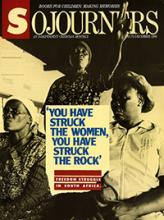Ronald Reagan, it is said, has run America's first cinematic presidency, often taking his ideological cues and policy prescriptions from his familiar world of the silver screen. In this, as in all else, gentleman-in-waiting George Bush has sought to emulate his mentor.
Bush's campaign was dominated by a tough-guy pose apparently derived from the careful study of Clint Eastwood's Dirty Harry series. In his "gentler America" speech at the Republican Convention, Bush tried to vary the repertory with an out-of-character stab at a Henry Fonda impression.
But for one unseasonably chilly week in September, the Bush campaign was looking like a long-mislaid final scene from They Froze Hitler's Brain, as Nazi-sympathizers and other anti-Semites were emerging from the closets of his campaign organization. Hitler's Brain was one of a rash of 1950s horror movies based on the premise that Hitler wasn't really dead and that somewhere out there a well-placed Nazi cabal was quietly plotting his eventual return to power.
Novelist Robert Stone, writing in Harper's magazine, recently noted that fiction often serves the same function for a culture that dreams perform for the individual psyche. He described it as a process of cleansing the subconscious by airing out those cobwebbed comers that are too threatening for the conscious mind.
That is precisely what happened in American movie theaters in the superficially cheerful years after World War II. That war loosed two terrifying new realities upon the human race. One was the Nazis' coldly calculated technocratic genocide of the Jews. The other was America's unleashing of atomic power which raised the possibility of a new, instantaneous, and even accidental holocaust.
Read the Full Article

